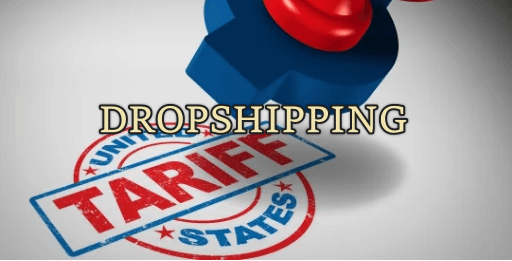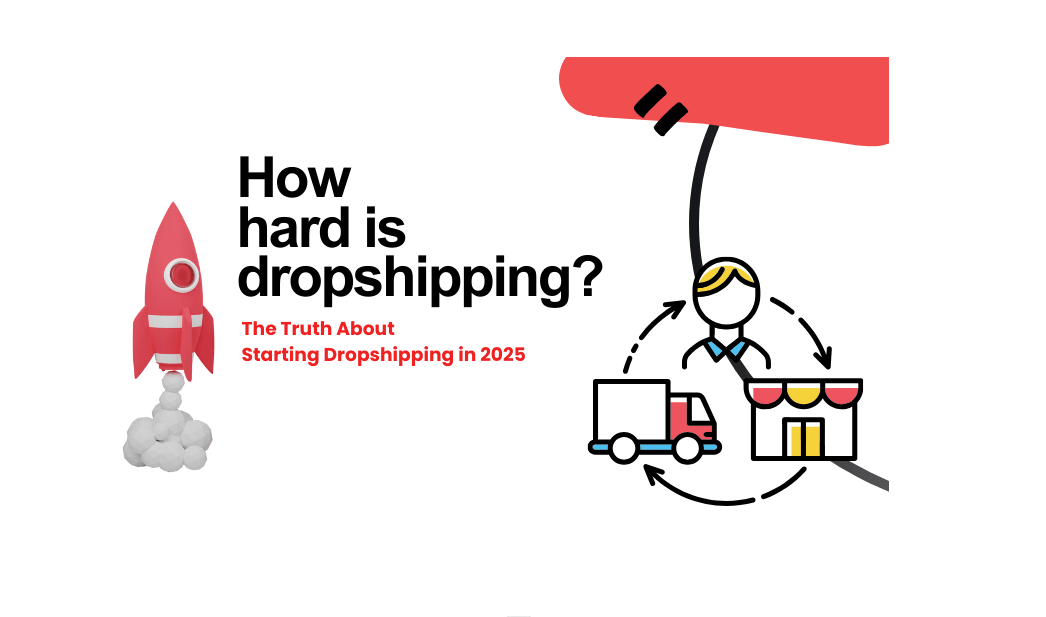The intersection of coffee culture and online shopping has opened a unique opportunity for entrepreneurs: coffee dropshipping.
With record levels of coffee consumption worldwide and online shopping as the new standard, the timing could not be more opportune to venture into this business model.
So, how profitable is dropshipping coffee?
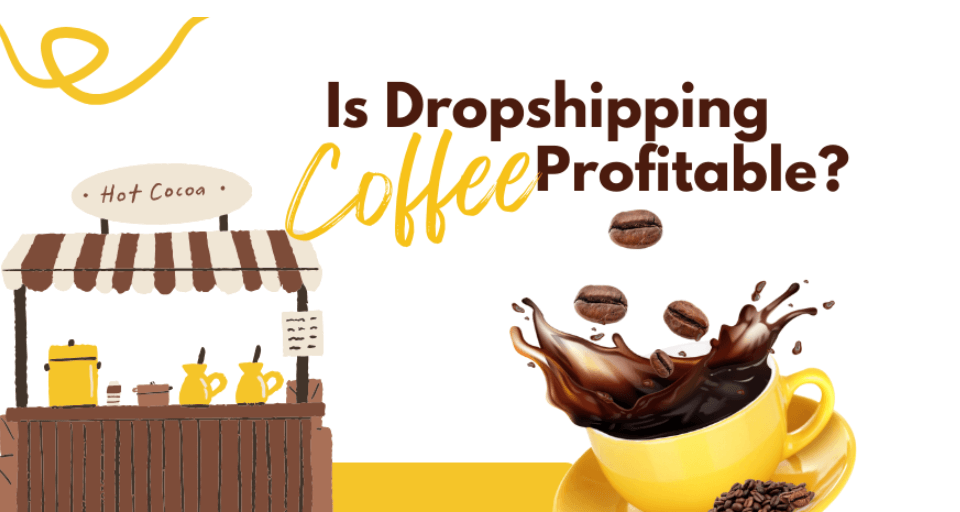
In this guide, we’ll take a look at the coffee dropshipping market, top suppliers, and key factors to consider before launching your business.
Dropshipping Coffee Market Insights
Coffee—a daily morning ritual for billions of people worldwide. Historically, it is one of the most consumed beverages, with the international coffee market anticipated to reach $155.64 billion by 2026. Such tremendous growth offers rich ground for dropshipping business owners.
Besides, the sale of coffee goods online via websites jumped 14% during 2024, with millennials and Gen Z driving much of the activity. These groups prioritize convenience, sustainability, and unique experiences—all perfectly aligned with a successful coffee dropshipping model.
And dropshipping coffee enables entrepreneurs to gain access to this market without needing to roast, package, or ship the goods themselves. It is competitive, however, success is based on good suppliers, brand marketing, and good sourcing. Profit margins typically range between 15% and 50% based on prices and the cost of the supplier.
Dropshipping Coffee Suppliers
If you have decided to start a dropshipping business, you need to know that your business success will considerably rely on selecting the RIGHT supplier. The following are the main types of suppliers categories:
- Wholesale dropshipping suppliers
- Private-Label dropshipping suppliers
- Niche-specific suppliers
- Service-oriented suppliers
- Subscription-based suppliers
Based on your business model and target market — each category of supplier has different advantages. Here is a comprehensive overview of these main categories, along with some examples of specific brands present in each category.
1. Wholesale Dropshipping Suppliers
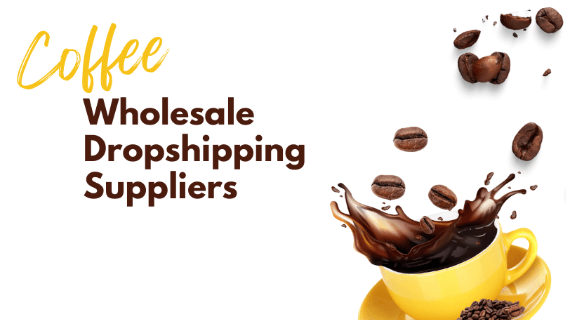
Wholesale dropshipping suppliers serve as a cost-efficient and accessible entry point for entrepreneurs looking to start a coffee dropshipping business. One of the key advantages of working with wholesale providers is the absence of minimum order requirements, making it easier for new sellers to test the market and scale their business at their own pace.
| Supplier | Selection | Pricing | Shipping | Integration |
| Dropshipman | Over 1M+ products | |||
| Java Dropship | Over 45 coffee blends from worldwide origins | $8-15 per pound wholesale (retail: $18-30) | 2-5 business days within North America | Native Shopify, WooCommerce, and Wix plugins |
| Coffee Bean Direct | Over 100 coffee varieties and 30+ flavor choices | $7-14 per pound (retail: $16-28) | 1-3 business days within continental US | API integrations with top e-commerce platforms |
| Globex Coffee Supply | 60+ single-origin and blended choices | Tiered pricing beginning at $9/lb, down to $6.50 in volume | Global shipping (2-9 days by region) | Custom integration solutions offered |
| Wholesale Coffee Network | 75+ varieties with certified organic choices | $10-18 per pound based on certification and origin | Carbon-neutral shipping in 3-7 days | Full Shopify, Amazon, and eBay listing support |
2. Private-Label Dropshipping Suppliers
Private-label suppliers enable you to resell coffee under your own name without having to hold inventory, with greater brand identity and higher margins.
| Supplier | Services | Minimum Order | Pricing | Lead Time |
| White Label Brew Co. | Full custom packaging, application of logo, and blend design | None for dropshipping (25-pound MOQ for custom blends) | $12-20 per pound depending on customization | 5-7 days standard, 14-21 days for custom blends |
| YourBrand Coffee | Pre-ship private label products with customizable labels | No minimum for standard offerings | Base price of $11/lb + $2-4 for private label packaging | 3-5 business days for regular products |
| BrandRight Coffee Solutions | Full brand creation including packaging design services | No minimum for dropshipping regular blends | $13-22 per pound including all branding elements | 5-10 business days based on level of customization |
| Private Label Express | Expert in small batch private label manufacturing | No minimum for well-established dropshippers | Beginning at $10/lb with volume discounts | 3-7 business days for shipping |
3. Niche-Specific Suppliers
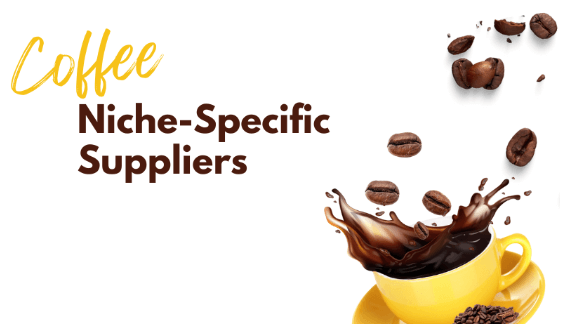
These suppliers specialize in certain coffee niches, so you can serve particular customer segments with niche-specific offerings.
| Supplier | Specialization | Selection | Pricing | Unique Selling Point |
| Organic Coffee Dropship | 100% certified organic coffees | 30+ organic varieties with diverse certifications | $12-22 per pound wholesale (retail: $24-40) | Full transparency with farm-to-cup tracing |
| Altitude Coffee Collective | High-altitude award-winning single-origin coffees | Rotating selection of competition-grade coffees | $15-30 per pound based on rarity and awards | Access to limited-production micro-lots |
| Ethica Coffee Partners | Fair trade and direct trade relationship coffees | 25+ ethically-sourced flavors with producer stories | $11-18 per pound wholesale | Detailed impact reports for every purchase |
| Cold Brew Supply Co | Cold brew concentrates and products ready to ship | 15+ cold brew recipes and bottling configurations | $6-10 per 16oz bottle wholesale | Shelf-stable recipes with 6-month stability |
4. Service-Oriented Suppliers
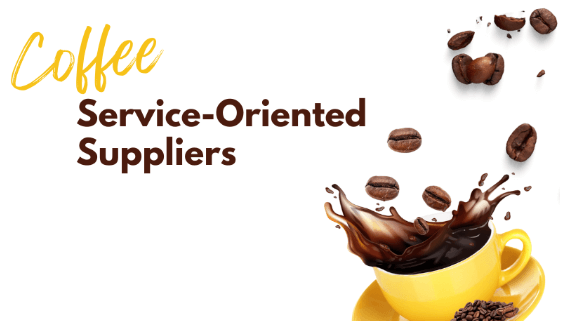
Service-oriented suppliers provide more than just coffee. They offer marketing support, custom content, brewing guides, and educational materials to help dropshippers build stronger brands. This category is ideal for entrepreneurs looking to offer a more engaging coffee experience, whether through expert knowledge, high-quality visuals, or bundled products that elevate their brand.
| Supplier | Services | Coffee Selection | Pricing | Additional Offering |
| Coffee Commerce Solutions | Full marketing packages and content generation | 50+ options with individually custom content | Base wholesale price with subscription levels for services | Professional photography and product descriptions |
| Roaster’s Dropship Collective | Educational materials and brewing tutorials | Artisan-roasted choice from 20+ micro-roasters | $13-25 per pound plus add-ons on services at extra cost | White-labeled brewing guides and coffee knowledge |
| Total Coffee Experience | Equipment bundles and complimentary products | 40+ coffee types along with equipment | Multiple pricing based on product packages | Coffee and equipment pairing suggestions |
5. Subscription-Based Suppliers
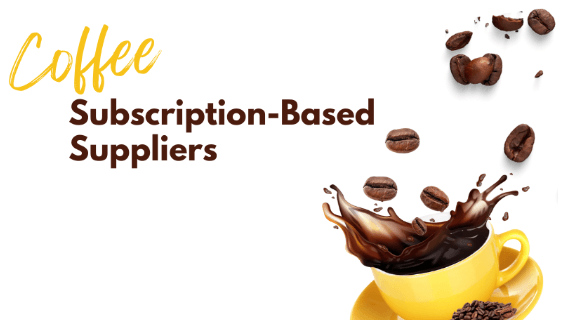
Subscription-based suppliers specialize in recurrent coffee shipments. They help dropshipping businesses generate stable, long-term revenue. They offer flexible plans, such as weekly, bi-weekly, or monthly deliveries, supporting consistent customer engagement.
| Supplier | Models | Pricing | Retention Rate | Integration |
| DropShip Coffee Club | Weekly, bi-weekly, and monthly subscription plans | $15-25 per shipment wholesale (retail: $25-45) | Average 7.5 months per customer | Subscription management software included |
| Bean Box Wholesale | “coffee of the month” and personalized subscription paths | $12-30 per shipment based on frequency and choice | 68% customer retention after 6 months | API integration with subscription commerce platforms |
| Recurring Roast | AI-based taste preference matching for customized subscriptions | Tiered pricing beginning at $14 per shipment | 8.2 months average customer lifetime | White-labeled subscription portal for your site |
Factors to Consider (3 Factors)
When choosing a coffee dropshipping supplier, there are some key considerations that will have a direct effect on the success and profitability of your business. Thoroughly analyzing these factors before you enter into an agreement can spare you much grief in the future.
Factor1: Quality and Origin
Coffee quality is still the key to a thriving dropshipping operation. High-quality beans bring better prices and customer loyalty, whereas poor products generate returns and bad word-of-mouth.
- Ask for samples from prospective suppliers to test taste, smell, and texture.
- Ask them about their sourcing model—workers having direct trade relationships tend to provide better-quality beans and richer storytelling for marketing.
- Verify if the suppliers have organic, fair trade, or Rainforest Alliance certifications. Because these stamps of approval can help your company demand premium pricing and appeal to ethically aware customers.
- The freshness factor is also important; check roasting dates and supplier inventory turnover rates to guarantee customers get beans at their best flavor.
Factor 2: Shipping Times and Costs
Freshness and prompt delivery are not negotiable in the world of coffee. Carefully study potential suppliers’ average delivery times and shipping terms. Look at suppliers with a number of fulfillment centers if your target is a national or global audience.
Dropshipman excels in this area, with a supply chain center in China and two global warehouses in the United States (located in New Jersey and California) to ensure fast shipping.
Dropshipman can launch your store effortlessly with 1M+ ready-to-sell products, instantly imported to Shopify with one click. Automate order fulfillment, inventory updates, and shipping tracking to save hours daily.
Stay ahead of trends using real-time AI analytics that highlight top-selling items, while customizing orders with branded packaging, gift cards, and personalized notes.
Source products seamlessly from AliExpress, Temu, and trusted suppliers—all in one platform.
Shipping rates can greatly diminish profit margins, so seek preferential rates that grow with the expansion of your business. Flat-rate shipping terms that keep profitability irrespective of variable order sizes are something that many successful coffee dropshippers look for.
Quality packaging is important too—beans need to be delivered undamaged and safely from moisture, light, and temperature changes that degrade quality.
Factor 3: Integrating with eCommerce Platforms
Smooth technical integration between your selling platform and supplier profoundly affects operational effectiveness. Search for suppliers with direct API integration or plugins for your preferred eCommerce platform (Shopify, WooCommerce, etc.).
Automatic inventory synchronization is critical to avoid overselling products that might be out of stock. Assess how order data moves between systems—preferably, new orders should be automatically sent to your supplier without human involvement.
Think about the quality of technical support offered; there are some dropshipping suppliers who have dedicated managers available to fix connection problems. The provision to display proper shipping times and tracking details on your store also greatly improves customer experience and lessens support requests.

How to Select Coffee Beans
The coffee beans that you provide will establish your brand and draw various customers.
Every type has its unique flavor, caffeine content, and uses. Knowing these variations can help you make the right choice for your dropshipping business.
Arabica
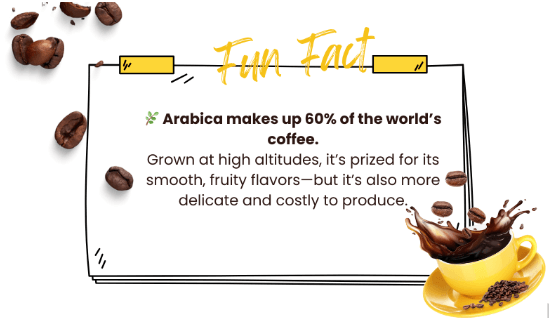
Arabica beans are produced at about 60% of the world’s total coffee production and are favored for their complex, smooth flavor profiles. They are cultivated at higher elevations (2,000-6,000 feet) and have notes varying from sweet and fruity to nutty and chocolatey.
Arabica has less caffeine than Robusta, and its use can extend to a broader range of consumers. Nevertheless, the plants are vulnerable to disease and insects—which normally increases coffee prices. Arabica beans appeal to specialty coffee consumers who are willing to pay a premium for subtle flavors.
Robusta
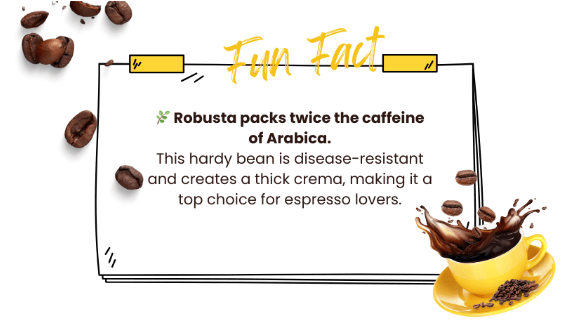
Robusta beans provide a more bitter, richer flavor character with about twice the level of caffeine found in Arabica. Robusta is more disease- and pest-resistant and thrives at lower altitudes at a lower cost to produce and sell.
Robusta beans create a characteristic crema in espresso blends and provide earthy flavors that are bold—cutting through milk beverages. These beans are perfect for clients who require high-caffeine content or those who love strong, full-bodied coffee experiences.
Liberica
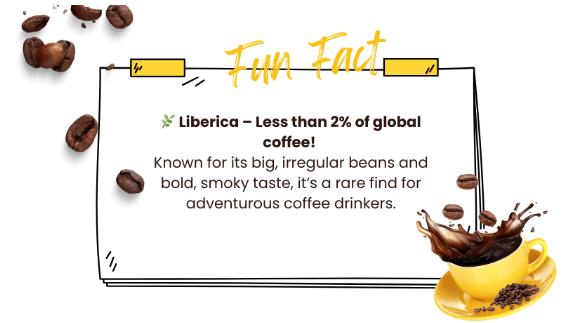
Liberica beans are unique, representing under 2% of world coffee output. The beans are bigger than Arabica and Robusta and have an irregular shape, along with a distinct flavor that is woody, smoky, and floral with dark chocolate notes. Liberica provides unique market positioning for dropshippers to stand out through exotic products appealing to coffee enthusiasts looking for novel experiences.
Ethiopian

Ethiopian beans, which are mainly Arabica species, are celebrated for their typical floral and fruity flavors. These beans are enriched by Ethiopia’s perfect conditions of cultivation, with high altitudes and traditional farming methods.
Ethiopian coffees have a tendency to display intricate berry, citrus, and wine-like flavors—so they are particularly coveted by specialty coffee aficionados. Emphasizing the peculiar terroir and processing systems of Ethiopian beans can provide good marketing stories for your dropshipping company.
How to Start Dropshipping Coffee
Above we talked about the market potential of Dropshipping coffee, 5 types of coffee suppliers. And four popular coffee beans. See here, if you are still interested in starting your dropshipping coffee business, then next we will help you through 5 steps.

Step 1. Choose Your Sales Channel
Your online store is the base of your business. The platform you choose will affect your store’s setup, design, and management. Shopify is one of the most popular options. It is easy to use and has built-in dropshipping tools. The platform offers over 70 coffee-specific themes and templates, though this convenience comes at a price—plans range from $29-$299 monthly plus transaction fees between 2.4-2.9% per sale.
For visually-oriented entrepreneurs who prioritize design flexibility, Wix presents an attractive option. It is a beginner-friendly choice with simple drag-and-drop features. With over 800 templates and extensive design customization options, Wix allows for distinctive storefronts at a relatively affordable price point—business plans range from $23-$49 monthly when billed annually.
However, if you prefer more control and already use WordPress, WooCommerce is a great option. While requiring moderate technical knowledge, WooCommerce offers virtually unlimited customization through direct access to PHP, CSS, and database management. Dropshipping integration comes through plugins like WooDropship, AliDropship, and DropshipMe.
Think about your long-term goals and technical skills before choosing a platform. If you want a quick, hassle-free setup, Shopify or Wix is best. If you need flexibility and customization, WooCommerce is a better choice.
Step 2. Decide on Your Business Model
Your business model defines your method of operation and profit potential. Next, you have to choose a business model. In coffee dropshipping, there are two main models to consider, each with its own advantages and challenges.
- White Label: You sell pre-branded coffee made by suppliers. It offers minimal risk but little brand differentiation and limited supplier control.
- Private Label: You design the packaging and branding. This has a greater profit margin but takes longer to set up.
If we talk about the White Label approach, the profit margins are usually slimmer (around 15-25%) because you’re selling existing brands. The Private Label model, on the other hand, requires stronger collaboration with suppliers at the expense of exclusive branding control. And although it takes longer to build—it provides better margins (25-40%) and greater brand differentiation.
Step 3. Choose a Supplier
Strong supplier relationships are essential for a successful coffee dropshipping business. Start by researching suppliers through directories like Worldwide Brands and SaleHoo or B2B platforms like Alibaba. Shortlist 3-5 potential partners and request product samples to evaluate quality, packaging, and shipping times.
Assess communication responsiveness and fulfillment reliability to identify any operational issues before scaling. Verify supplier quality through certifications such as organic or fair trade and review their production facilities if possible. Ensure seamless integration with your e-commerce platform by testing API connections and inventory synchronization.
For private label businesses, evaluate branding capabilities, packaging options, and minimum order requirements. These steps ensure consistent product quality, smooth operations, and long-term business stability.
Pro Tip:
Have backup suppliers in case of disruptions. This ensures that your best supplier being late or out of stock won’t result in an interrupted supply chain.
Step 4. Set Up Your Store
Your online store should be visually appealing and easy to get through. Start with a strong brand identity, including a professional logo, coffee-inspired colors, and readable typography. Use high-quality images to showcase your products in real life settings. A clean, mobile-friendly layout ensures a smooth shopping experience, with products accessible in three clicks.
Product pages should be clear and informative. Use high-resolution images with zoom features, scannable descriptions, and structured details on flavor, origin, and roast levels. Customer reviews and testimonials add credibility. Ensure pages load quickly, ideally under 2.5 seconds, to reduce bounce rates.
Security and convenience are key to conversions. Implement SSL certification, offer multiple payment options, and display inventory availability. Provide real-time order tracking and automate customer notifications for transparency. A simple checkout process, including guest checkout, reduces friction and improves sales.
Step 5. Begin Marketing Your Business
A strong multi-channel marketing strategy is essential for attracting and retaining customers in the specialty coffee market. Since coffee is a highly visual and experience-driven product, your marketing efforts should focus on storytelling, high-quality imagery, and engaging content that highlights the uniqueness of your brand.
- Social Media: Use Instagram, TikTok, and Facebook to display your coffee and interact with prospective purchasers.
- SEO & Blogging: Create blog posts on coffee trends, brewing, and sourcing to enhance search engine rankings.
- Email Marketing: Create a mailing list and send offers, coffee guides, product suggestions, etc.
- Paid Ads: Place targeted advertisements on Google and social media to target coffee lovers.
Besides, monitor competitor activities across marketing channels to identify the latest trends, messaging shifts, and new opportunity areas. Use competitive intelligence tools to track their paid search keywords, social engagement metrics, and content performance. This insight helps refine your strategy and uncover gaps in your approach.
Conclusion
Dropshipping coffee is a scalable and lucrative business with low risk. By choosing great suppliers, refining your brand, and utilizing the right eCommmerce platforms—you can build a thriving online coffee store. With increased demand for specialty coffee, there is ample room to expand in this competitive market.
FAQs about Coffee Dropshipping
Q1: Is dropshipping coffee worth it?
Yes, dropshipping coffee can be profitable because there is increasing demand for specialty coffee and subscription-based business models. It requires little initial investment and scalable flexibility, making it a fantastic choice for those who want to venture into the eCommerce platform.
Q2: Can I dropship coffee beans wholesale?
Yes, numerous coffee wholesale suppliers support dropshipping services. You have the ability to buy bulk coffee beans at wholesale prices and then sell them online without keeping anything in stock or handling shipping yourself. Wholesale dropshipping is appropriate for people focused on reaching customers who are primarily price-sensitive.
Q3: Is dropshipping coffee profitable?
Dropshipping coffee can be very profitable, particularly with private-label branding. Profit margins usually range from 15-40%, depending on your pricing model and supplier price. Targeting niche markets, like organic or ethically produced coffee, can also increase profitability.
![Dropshipping General Store vs. Niche Store [2025 Data and Table]](https://www.dropshipman.com/wp-content/uploads/2025/03/general-vs-niche-store.png)
